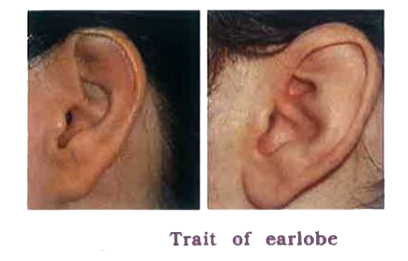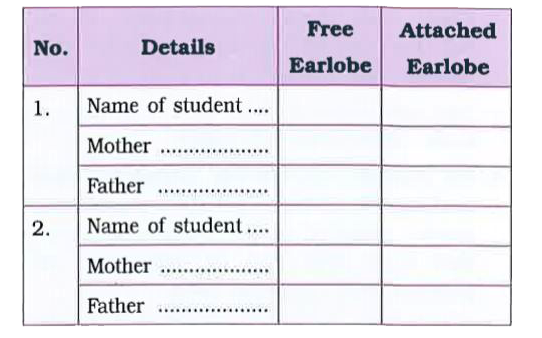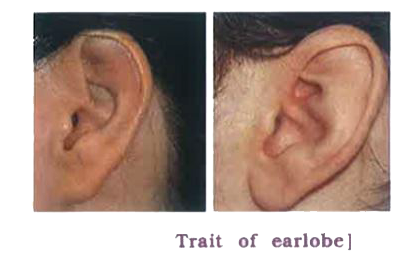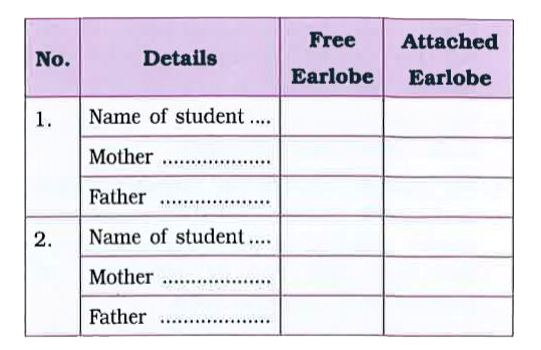Which of the following is not an acquired characteristic? a.To learn swimming by man b.To have a scar of wound on the human face c.To role on the skatting ring with the skates d.To have attached earlobe (of the pinna)Solution in Gujrati
To learn swimming by man
To have a scar of wound on the human face
To role on the skatting ring with the skates
To have attached earlobe (of the pinna)
The correct Answer is:A, B, C, D
Step by step video, text & image solution for Which of the following is not an acquired characteristic? a.To learn swimming by man b.To have a scar of wound on the human face c.To role on the skatting ring with the skates d.To have attached earlobe (of the pinna) by Biology experts to help you in doubts & scoring excellent marks in Class 10 exams.
Updated on:21/07/2023Topper's Solved these Questions
- HEREDITY AND EVOLUTIONBOOK - KUMAR PRAKASHANCHAPTER - HEREDITY AND EVOLUTIONEXERCISE - OBJECTIVE QUESTIONS AND ANSWERS (Answer the following questions in short : )
1 Videos
- HEREDITY AND EVOLUTIONBOOK - KUMAR PRAKASHANCHAPTER - HEREDITY AND EVOLUTIONEXERCISE - OBJECTIVE QUESTIONS AND ANSWERS (Fill in the blanks: )
1 Videos
- HEREDITY AND EVOLUTIONBOOK - KUMAR PRAKASHANCHAPTER - HEREDITY AND EVOLUTIONEXERCISE - ADDITIONAL QUESTIONS AND ANSWERS
18 Videos
- CONTROL AND COORDINATIONBOOK - KUMAR PRAKASHANCHAPTER - CONTROL AND COORDINATIONEXERCISE - PRACTICAL SKILL BASED QUESTIONS WITH ANSWERS
8 Videos
- HOW DO ORGANISMS REPRODUCE?BOOK - KUMAR PRAKASHANCHAPTER - HOW DO ORGANISMS REPRODUCE?EXERCISE - PRACTICAL SKILL BASED QUESTIONS WITH ANSWERS
5 Videos
Similar Questions
State the example of animal in which sex is not genetically determined.
View SolutionThe variations generated during …………………………….. become hereditary.
View SolutionDistinguish between :
Acquired characteristics and Hereditary characteristics
View SolutionFour different students of your class observed network of neurons in a slide under microscope. They drew a diagram of synaptic junction.
From your knowledge.
Which of the following figures shows the correct pathway for the conduction of impulse ?
View SolutionCollect different flowers such as Maize, Sunflower, Papaya, Hibiscus, Datura, Rose, Crinum, etc. Which of them are bisexual ? Draw diagram of any one bisexual flower and state function of each parts.
View SolutionIn human, attached earlobes are a dominant feature over free earlobes while hypertrichosis (Y-linked) feature. A man with attached earlobed and extensive hair on pinna married a woman having free earlobes. The couple had one son with free earlobes and hairy pinna and two daughters with attached earlobes. One of the daughters with attached earlobes. One of he daughters married a man with free earlobes and sparse hair on pinna. They had two sons. What would be the characteristics of their ponnae ?
View SolutionWhich of the following is not characteristic of acquired immunity?
View SolutionIn man the muscles which move the pinnae are :
View Solutionसाहित्य के निर्माण में प्रतिभाशाली मनुष्यों की ............ भूमिका है।
View SolutionThe earlobe variants found in human population are
(i) free. (ii) curved (iii) round. (iv) attached.
View SolutionTo suggest rule for inheritance of earlobe type. Procedure /Method : rarr The lowest part of the ear pinna called the earlobe, is closely attached to the side of the head, i.e., attached or not, i.e., free. rarr Observe the earlobes of all the students in the class. Prepare a list of students. Enter the data about the earlobes whether they are free or attached. rarr Find out about the earlobes of the parents of each student in the class. rarr Correlate earlobe type of each student with that of their parents. rarr In the column write F for free earlobe and A for attached earlobe. Answer the following questions on the basis of the collected data: Which expression of earlobe is observed more in number in your class?
View SolutionTo suggest rule for inheritance of earlobe type. Procedure /Method : rarr The lowest part of the ear pinna called the earlobe, is closely attached to the side of the head, i.e., attached or not, i.e., free. rarr Observe the earlobes of all the students in the class. Prepare a list of students. Enter the data about the earlobes whether they are free or attached. rarr Find out about the earlobes of the parents of each student in the class. rarr Correlate earlobe type of each student with that of their parents. rarr In the column write F for free earlobe and A for attached earlobe. Answer the following questions on the basis of the collected data: Are the types of earlobes hereditary?
View SolutionTo suggest rule for inheritance of earlobe type. Procedure /Method :
→ The lowest part of the ear pinna called the earlobe, is closely attached to the side of the head, i.e., attached or not, i.e., free.
→ Observe the earlobes of all the students in the class. Prepare a list of students. Enter the data about the earlobes whether they are free or attached.
→ Find out about the earlobes of the parents of each student in the class.
→ Correlate earlobe type of each student with that of their parents.
→ In the column write F for free earlobe and A for attached earlobe.


Answer the following questions on the basis of the collected data:
From your collected data state which expression is dominant and which one is recessive for earlobe.
View SolutionTo suggest rule for inheritance of earlobe type. Procedure /Method :
→ The lowest part of the ear pinna called the earlobe, is closely attached to the side of the head, i.e., attached or not, i.e., free.
→ Observe the earlobes of all the students in the class. Prepare a list of students. Enter the data about the earlobes whether they are free or attached.
→ Find out about the earlobes of the parents of each student in the class.
→ Correlate earlobe type of each student with that of their parents.
→ In the column write F for free earlobe and A for attached earlobe.


Answer the following questions on the basis of the collected data:
Determine the percentage of free earlobe and attached earlobe in the students of your classroom.
View SolutionWhich is the function of gene? a.To form the structure of DNA. b.To form the structure of chromosome. c.To bring about the synthesize of protein. d.To synthesize DNA.
View Solution
